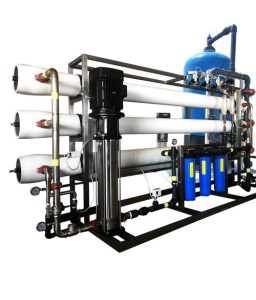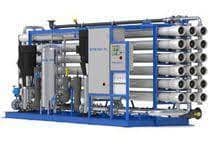Description
Brackish Water Treatment
If you’re looking for ways to treat brackish water, you’ve come to the right place. Brackish water, which is water that has more salinity than fresh water but less than seawater, is commonly found in coastal areas and is a common problem for many industries that rely on water. In this article, we’ll take a closer look at the process of brackish water treatment and the different methods used to make it potable.
What is Brackish Water?
Before we dive into the process of brackish water treatment, it’s important to understand what brackish water is. Brackish water is a type of water that contains a significant amount of salt but is not as salty as seawater. It is typically found in coastal areas, estuaries, and tidal rivers. Brackish water can also be formed when fresh and saltwater mix, such as during floods or storms.
Why is Brackish Water a Problem?
Brackish water can be a problem for several reasons. First, it is not potable, meaning it cannot be consumed by humans or animals without being treated. Second, it can damage equipment and infrastructure that relies on freshwater, such as irrigation systems, pipes, and pumps. Third, it can impact the ecosystem and natural habitat of plants and animals that rely on freshwater.
Brackish Water Treatment Process
The process of brackish water treatment involves several steps to remove impurities and make it potable. Here are the typical steps involved:
Pre-Treatment
The first step in brackish water treatment is pre-treatment. During this stage, large particles and debris are removed from the water to prevent them from clogging the system. This is typically done through a process called screening or sedimentation.
Reverse Osmosis
The second step in brackish water treatment is reverse osmosis. This is the most common method used to remove salt and other impurities from the water. During reverse osmosis, water is forced through a semi-permeable membrane that filters out impurities and salt. The purified water is then collected and stored in a tank.
Post-Treatment
The final step in brackish water treatment is post-treatment. During this stage, the water is disinfected to remove any remaining bacteria or viruses. This is typically done using chlorine or ultraviolet (UV) light.
Methods of Brackish Water Treatment
There are several methods of brackish water treatment, each with its own advantages and disadvantages. Here are some of the most common methods:
Reverse Osmosis
As mentioned earlier, reverse osmosis is the most common method used to treat brackish water. It is effective at removing salt and other impurities from the water, but it can be expensive and requires a lot of energy.
Nanofiltration
Nanofiltration is a newer technology that is similar to reverse osmosis but uses a different type of membrane. It is effective at removing salt and other impurities, but it requires less energy than reverse osmosis.
Electrodialysis
Electrodialysis is a process that uses an electric field to remove salt and other impurities from water. It is less expensive than reverse osmosis but is not as effective at removing impurities.
Distillation
Distillation is a process that involves boiling water and collecting the steam. The steam is then condensed and collected as purified water. It is effective at removing impurities, but it is expensive and requires a lot of energy.
Conclusion
In conclusion, brackish water treatment is a crucial process for industries and individuals that rely on water. It is important to understand the process of brackish water treatment and the different methods available to make it potable. Reverse osmosis is the most commonly used method for brackish water treatment, but there are newer technologies like nanofiltration and electrodialysis that are also effective. Distillation is another method that can be used, but it is more expensive and requires more energy.
Industries and individuals who are dealing with brackish water must take appropriate measures to treat it to make it potable. This not only helps to ensure access to clean and safe drinking water but also protects the ecosystem and infrastructure that rely on freshwater. It is also important to properly dispose of any waste generated during the brackish water treatment process to minimize its impact on the environment.
If you are looking for brackish water treatment solutions, Aqua Filter is a leading provider of water treatment solutions that can help. With years of experience and expertise in the industry, they can provide customized solutions to meet your specific needs.
FAQs
- What is brackish water?
Brackish water is water that has more salinity than fresh water but less than seawater. It is commonly found in coastal areas and can be a problem for industries and individuals that rely on water.
- What are the problems associated with brackish water?
Brackish water is not potable, can damage infrastructure, and can impact the ecosystem and natural habitat of plants and animals that rely on freshwater.
- What is the process of brackish water treatment?
The process of brackish water treatment involves pre-treatment to remove large particles and debris, reverse osmosis to remove impurities and salt, and post-treatment to disinfect the water.
- What are the methods of brackish water treatment?
The most common methods of brackish water treatment are reverse osmosis, nanofiltration, electrodialysis, and distillation.
- How can Aqua Filter help with brackish water treatment?
Aqua Filter is a leading provider of water treatment solutions that can provide customized solutions to meet your specific brackish water treatment needs.








Aqua Filter –
Aquaafilter is the go-to company for anyone in need of water filter services. Their staff is always willing to provide personalized solutions and exceptional service.